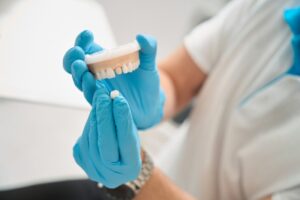
Dental crowns are a popular and effective solution for restoring damaged, decayed, or weakened teeth. Whether you’re getting a crown to strengthen a tooth after a root canal, to fix a cracked tooth, or to improve the appearance of a worn-down tooth, the process of preparing your tooth is a crucial first step. So, what exactly happens when your dentist prepares your tooth for a crown? Here’s a step-by-step look at what to expect.
Step 1: Initial Evaluation
Before any work begins, your dentist will thoroughly examine your tooth and surrounding area. This may include:
- A visual exam to assess damage or decay.
- Dental X-rays to check the roots of the tooth and the underlying bone.
- A discussion about crown materials (porcelain, metal, ceramic, or a combination) based on the tooth’s location and your preferences.
If there is a significant infection or decay, your dentist might need to perform a root canal before moving forward with the crown.
Step 2: Numbing the Area
To keep you comfortable throughout the procedure, your dentist will use a local anesthetic to numb the tooth and surrounding gums. If you’re anxious or nervous, additional sedation options may be available.
Step 3: Reshaping the Tooth
Once the area is numb, the dentist begins shaping the tooth to make room for the crown. This involves:
- Removing a layer of enamel from all sides of the tooth.
- Creating a smooth, tapered shape that allows the crown to fit snugly and securely.
If your tooth is severely decayed or broken, your dentist may need to build it up with filling material first. This step ensures there’s enough structure to support the crown.
Step 4: Taking Impressions
After the tooth has been reshaped, your dentist will take a mold or digital scan of the prepared tooth and surrounding teeth. This is used to custom-design your crown so that it fits perfectly with your bite and looks natural. If your dentist uses traditional impressions, they’ll place a soft putty in your mouth that hardens around your teeth. Digital impressions involve a small camera that scans your teeth, creating a 3D image.
Step 5: Temporary Crown Placement
Because creating a custom crown takes time (typically 1 to 2 weeks), your dentist will place a temporary crown over your prepared tooth to protect it. The temporary crown is usually made of acrylic or composite material and is held in place with temporary cement and is meant to last only until your permanent crown is ready. Your dentist will give you instructions on how to care for the temporary crown, including avoiding sticky or hard foods.
Step 6: Fitting the Permanent Crown
At your second appointment, your dentist will remove the temporary crown and check the fit, shape, and color of your new one. After any needed adjustments, the permanent crown is cemented in place, restoring the function and appearance of your tooth.
Preparing a tooth for a crown is a detailed but straightforward process that combines science, precision, and artistry. With the right care and a well-fitted crown, your restored tooth can last for many years, giving you back a confident, comfortable smile.
About the Practice
Do you have a damaged tooth that needs restoration? Trust our expert team at Jacksonville Dental Specialists to provide you with a dental crown for an effective solution. Our seamless, life-like restorations are custom made, and our treatment plans and results are 100 percent personalized. Furthermore, you’ll receive the very best care in a comfortable and welcoming office. If you’re ready to get your look and functionality back, schedule your appointment online or call us at (904) 683-4781.
